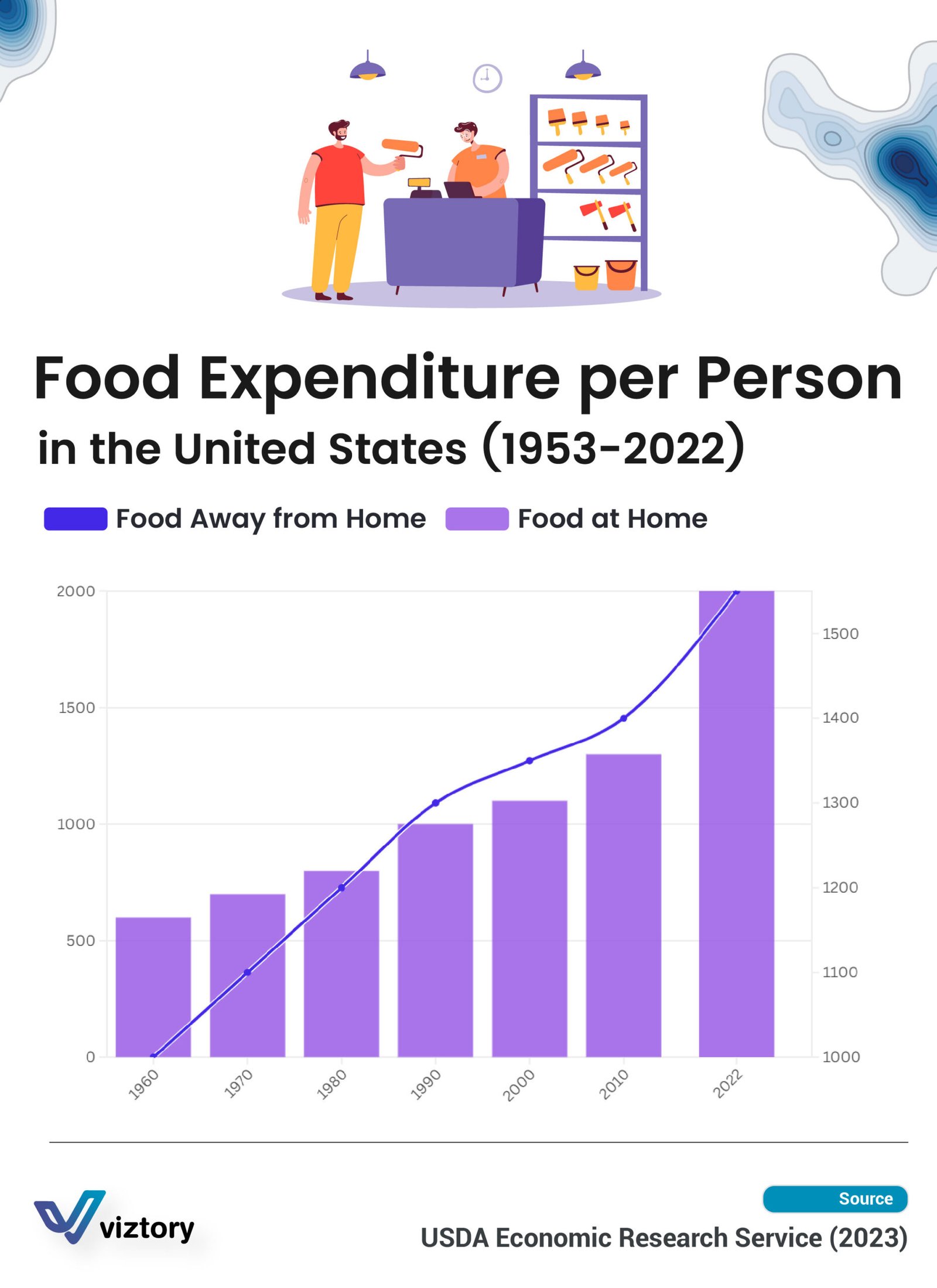Food Expenditure Trends and Healthcare
-
Oct, Tue, 2024
Food Expenditure Trends and Healthcare: The Changing American Diet (1953-2022)
Over the past several decades, food expenditure in the United States has seen a significant shift, with more people spending on food away from home than ever before. According to the USDA Economic Research Service, expenditures on food prepared outside the home have steadily risen, outpacing spending on food consumed at home. This trend not only reflects changes in lifestyle but also carries implications for healthcare, as dietary habits play a crucial role in public health outcomes.
Increased Spending on Food Away from Home
In 2022, the gap between expenditures on food away from home and food at home reached a record high, with food-away spending continuing its upward trajectory. This shift can be attributed to a range of factors, including busy lifestyles, increased access to fast food and restaurant options, and the convenience offered by food delivery services. However, this trend often comes at a cost to health, as food prepared outside the home tends to be higher in calories, fats, sugars, and sodium, contributing to various health issues such as obesity, diabetes, and heart disease.
The Link Between Diet and Healthcare Costs
As Americans increasingly rely on convenience foods, the healthcare system faces rising costs associated with diet-related illnesses. Poor dietary habits are a leading cause of preventable diseases, placing a burden on healthcare infrastructure. For example, fast food and processed meals are typically less nutritious and have been linked to chronic conditions that require ongoing medical care. Consequently, the rise in food-away spending reflects not only a cultural shift but also a significant factor in healthcare expenditure, as diet-related illnesses often necessitate costly treatments and interventions.
Impact on Public Health: A Growing Concern
The increase in spending on food away from home is particularly concerning for public health officials, as it points to a decline in the consumption of home-cooked meals, which tend to be healthier. Public health campaigns have long promoted the benefits of cooking at home, where individuals have greater control over ingredients and portion sizes. With more Americans eating out, it becomes harder to maintain a balanced diet, increasing the risk of lifestyle diseases. For healthcare providers, addressing this trend involves not only treating conditions but also investing in preventative measures that promote healthier eating habits.
Diet, Health, and Healthcare Disparities
The shift toward food-away spending also highlights disparities in healthcare access and dietary habits across socioeconomic groups. Lower-income families are often more reliant on inexpensive, calorie-dense foods available through fast food outlets, as healthier options may be less accessible or affordable. This contributes to a cycle of poor diet and health outcomes, particularly in underserved communities. For policymakers, this trend underscores the need to make healthy food options more accessible and affordable, as well as to implement public health initiatives that encourage dietary changes and improve healthcare outcomes.
The Role of Preventative Healthcare
As the link between diet and health becomes increasingly apparent, the healthcare industry is focusing more on prevention rather than just treatment. Preventative healthcare strategies, such as nutritional counseling and community health programs, aim to address the root causes of diet-related illnesses. By encouraging healthier eating habits and reducing reliance on food away from home, these initiatives can help mitigate the healthcare costs associated with poor diet. For individuals, making informed dietary choices is a proactive way to safeguard their health and reduce their future reliance on medical services.
Conclusion
The rising expenditure on food away from home reflects broader changes in American society, but it also presents challenges for healthcare. As dietary habits continue to evolve, so too must our approach to healthcare, with a greater emphasis on preventative care and public health education. By addressing these trends, we can work toward a healthier future where food choices contribute positively to both individual well-being and the overall sustainability of the healthcare system.

